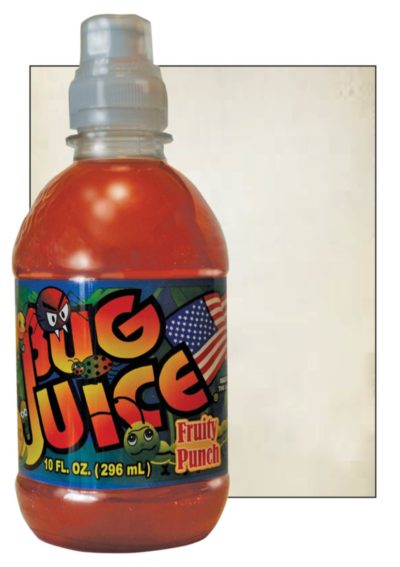

Chlorine in tap water can interfere with bacterial and yeast production, so choose filtered water or spring water. Irradiation is disallowed in organic production, so organic ginger works best. Conventionally grown ginger is often irradiated, which may impact its ability to form a thriving bug (2). You can substitute both fresh turmeric and fresh galangal in place of the ginger, for variety. Avoid non-caloric sweeteners like stevia. Sugar is the most common choice, but you can also use honey, maple syrup, palm sugar, or any other caloric sweetener. The yeast and bacteria that make your bug bubble need sugar to help them grow.

Dice the ginger instead of grating it.Or, at the very least, know someone who brews it. You can make a ginger bug at home, but you must purchase a ginger beer plant. That SCOBY produces tiny, gelatinous crystals that you feed sugar water, lemon, and ginger. Ginger bugs are wild-fermented starter cultures that rely on the native yeast and bacteria of your kitchen to become bubbly.īy contrast, ginger beer plants are a SCOBY (symbiotic culture of bacteria and yeast) very similar to water kefir and made primarily of the yeast Saccharomyces pyriformis and bacteria like Brevibacterium vermiforme (1). While they're both rich in probiotics and used to make natural sodas, they're two different things. Ginger Bug vs Ginger Beer Plantĭon't confuse ginger bug and ginger beer plant. So while brews made with ginger bug are still treats, they're far better for you than regular soda. And ginger shows promise in easing morning sickness (4) and migraine (5). Herbalists use ginger to support blood sugar regulation, ease nausea, and support digestion (3). Ginger is a wildly popular culinary herb, and it also has medicinal properties. These organisms help to support metabolic and digestive health as well as the immune system. Since ginger bugs are fermented foods, they're naturally rich in probiotics, namely lactobacillus bacteria, and wild yeasts. As they do, they reproduce and emit carbon dioxide that gives homemade soft drinks their bubbles. When mixed with sweetened herbal tea, fruit juice, or another base, the microorganisms in the ginger bug consume the sugar in the tea or juice.

These wild microorganisms eat the sugar in your bug and produce carbon dioxide as a result. When you mix ginger and sugar together with water and let it sit, the wild bacteria and native yeasts in your kitchen and on the ginger itself begin to proliferate and grow. And ginger bugs make homemade, naturally fermented sodas. Sourdough starters provide the bacteria and yeast to make bread. These starters kickstart the fermentation process for other fermented foods. Like sourdough starter, ginger bug is a starter culture that is rich in wild bacteria and yeast. Brewers use the bug to brew fermented drinks and drinks like root beer, ginger beer, or probiotic lemonade. Ginger bug is a slurry of fresh ginger, sugar, and water that has been allowed to ferment until bubbly and foamy. Jump to Recipe | What is it? | Brewing Tips What is ginger bug? It takes about a little less than a week of daily diligence to make one, and you can use it to make probiotic, naturally bubbly soft drinks, sodas, herbal beers, and tonics. A ginger bug is a wild-fermented starter culture made with sugar, ginger, and water.


 0 kommentar(er)
0 kommentar(er)
